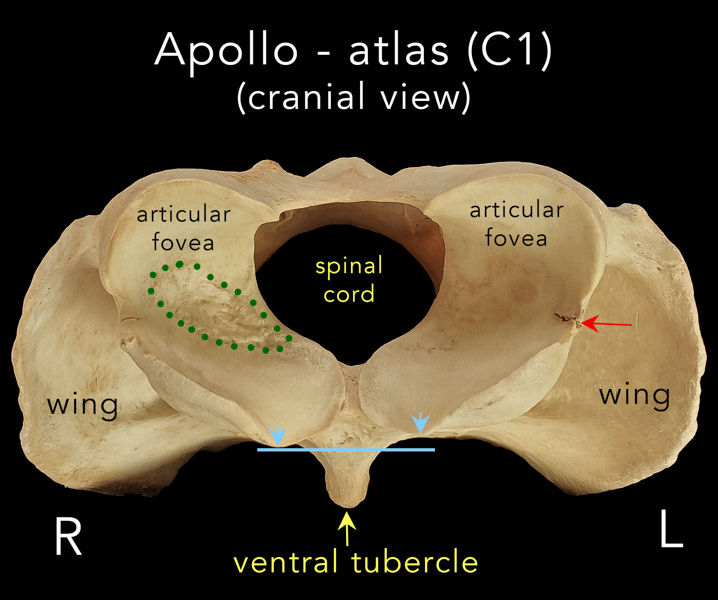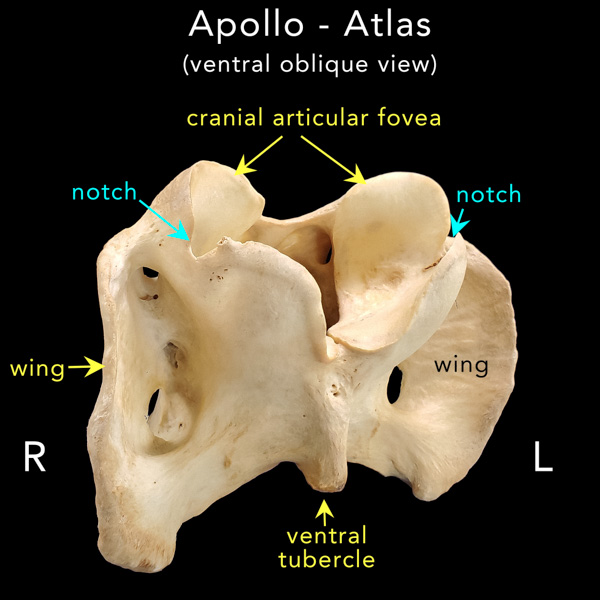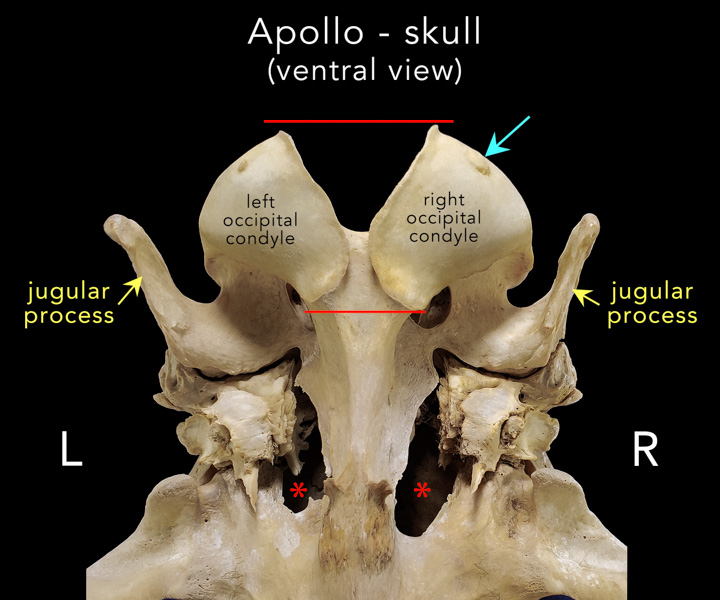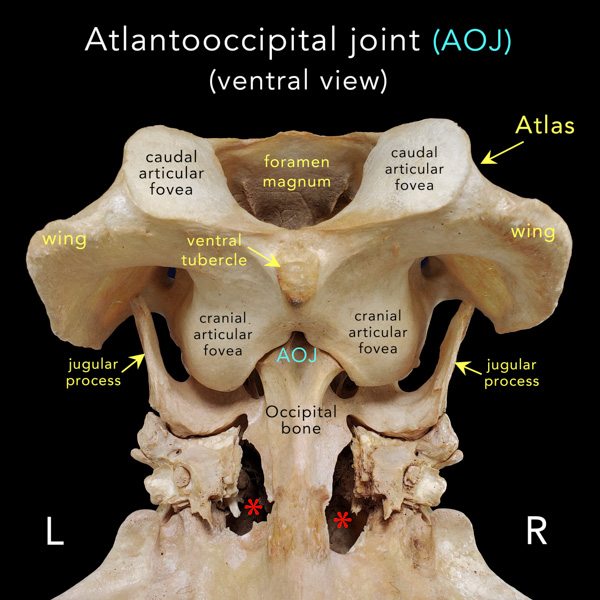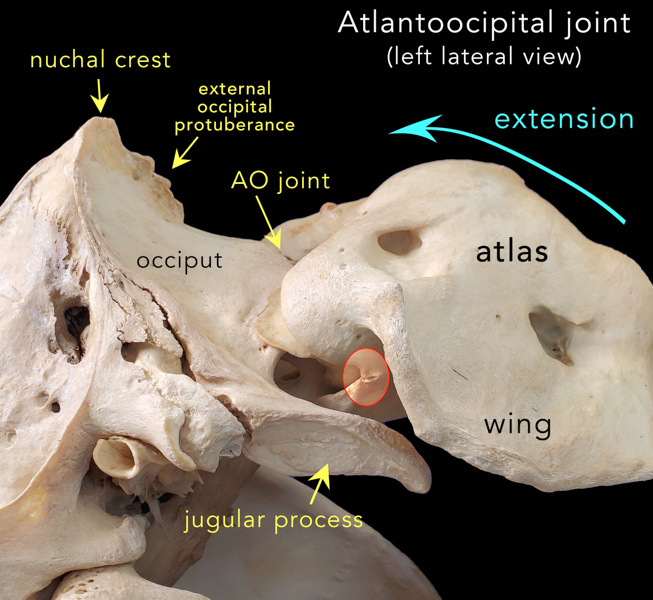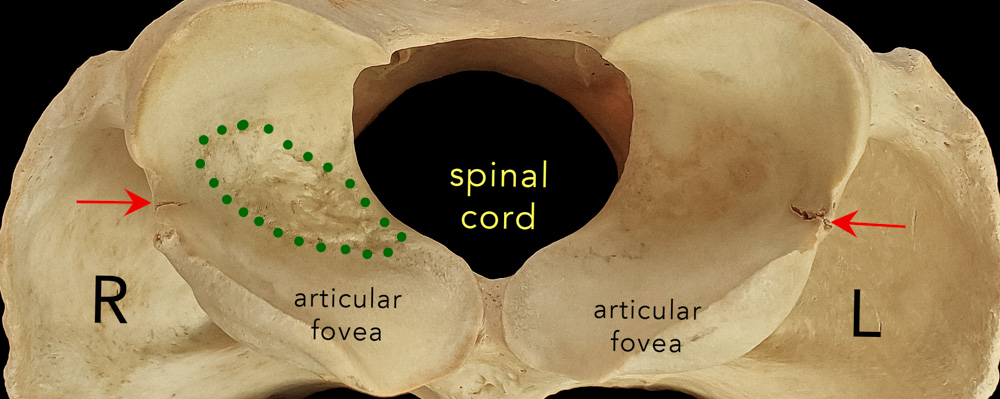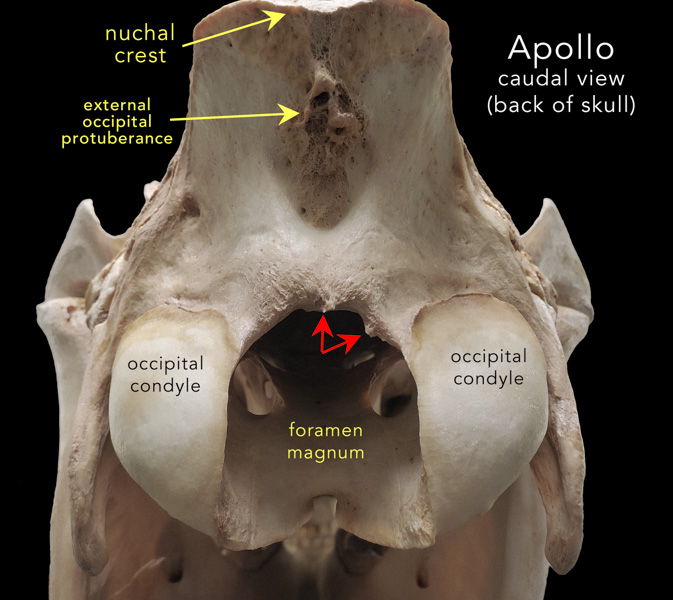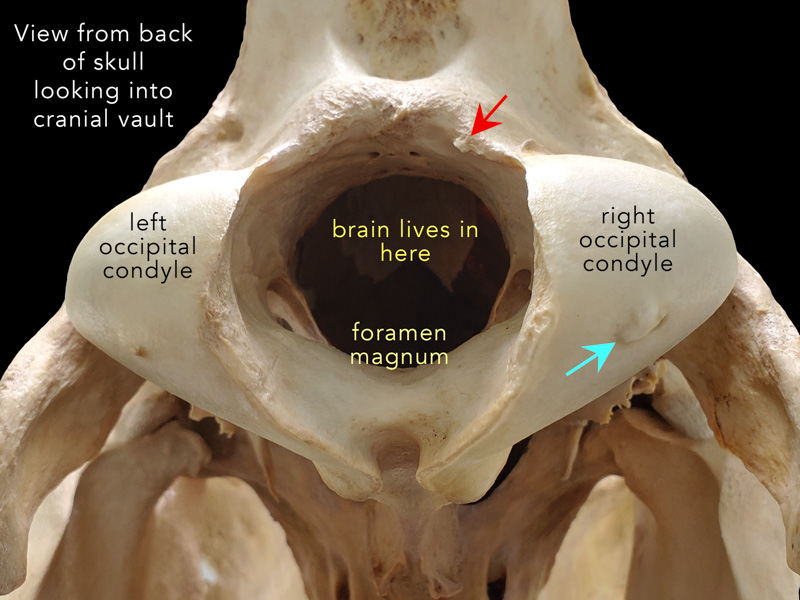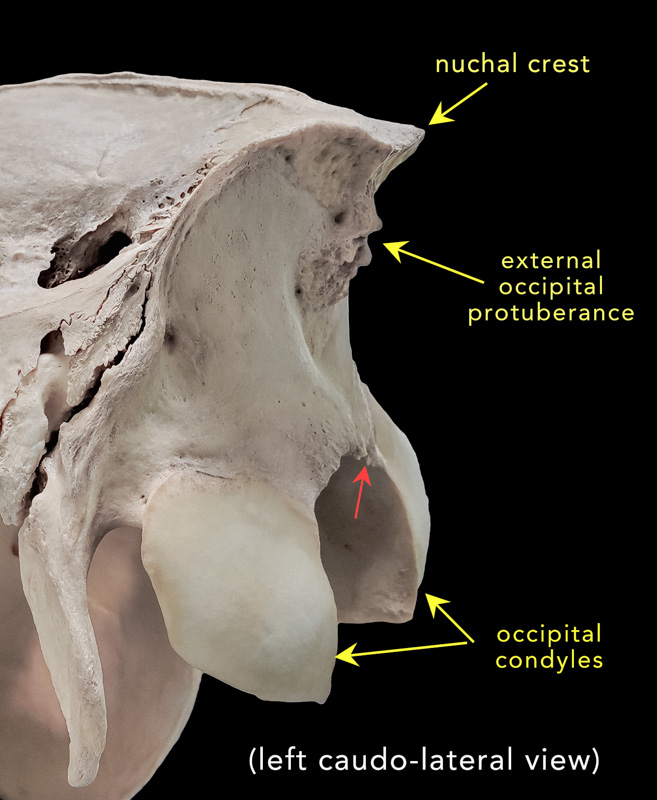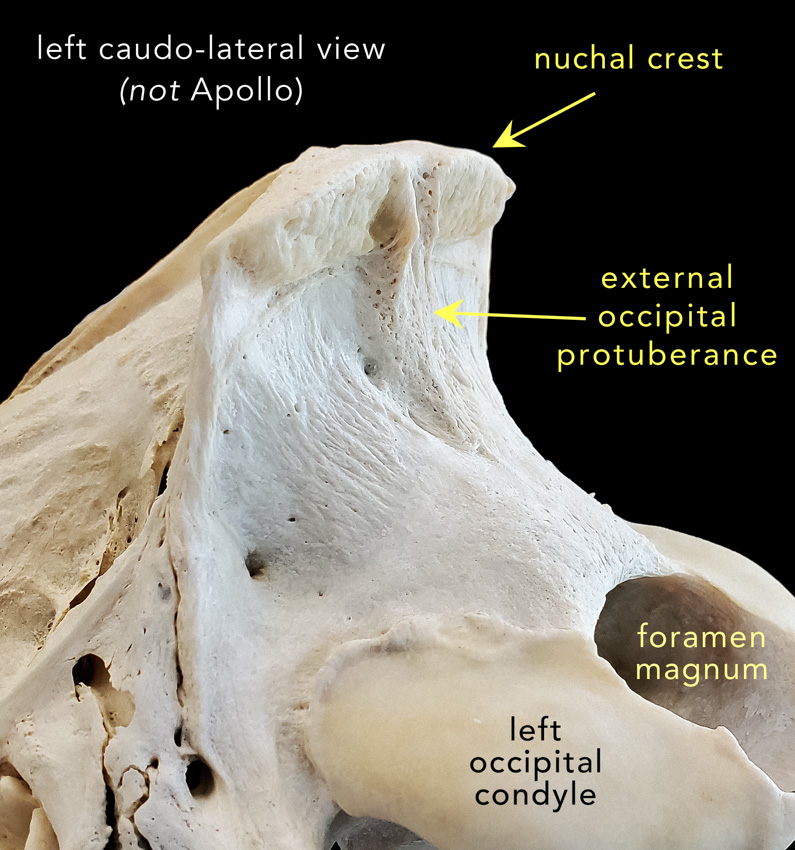Aiken, SC
info@equus-soma.com
Equus-Soma
Equine Osteology & Anatomy Learning Center
Waldoboro, ME
207-542-6132
Skull & Atlantooccipital Junction
The most notable anomalies of Apollo's skull are a general asymmetry as well as, the presence of mild osteophytes and enthesophytes, all of which are present in the region of his atlantooccipital joint (AOJ), commonly referred to as the "poll".
Hopefully, the photos below will adequately describe the anatomy of these structures. Bear in mind that this is a complicated junction to illustrate via 2-dimensional photographs!**CLICK ON ANY IMAGE TO ENLARGE**
The AOJ is formed by the articulation of the paired, convex occipital condyles of the occipital bone (occiput) with the corresponding oval, deeply concave cavities (articular fovea) of the atlas.
Below: Cranial view of Apollo's atlas (C1). A slight asymmetry between the right and left articular foveae is indicated by the blue line and arrows.Below: Apollo's atlas is flipped up 90º and rotated slightly to better illustrate the concavity of the cranial articular foveae. Notice too, the presence of a "notch" on each of the lateral borders. The notches are a normal feature of the atlas.
Below Left: Ventral view of the occipital bone of Apollo's skull (the mandible was removed) showing the left and right, rounded occipital condyles. Note the size difference between the two condyles as marked by the red lines.
Below right: Ventral view of Apollo's occipital bone with the atlas attached to form the atlantooccipital joint (AOJ).
Other indications of asymmetry are seen in the relative dimensions of the "foramen lacerum" (red asterisks photos below). These are paired openings through which important nerves pass out from the cranial vault (brain).
Movement of the atlantooccipital joint is mostly dorsoventral flexion and extension. The rounded, convex shape of the paired articular condyles of the occiput conform to the concave cranial articular fovea of the atlas.
The photos to the left and right illustrate the orientation of the atlas relative to the occiput in extension and flexion. Notice how the articular foveae of the atlas slide up and over the occipital condyles of the occiput to open (extend), then back and down to close (flex) the AO Joint.
A closer examination of this junction revealed what appears to be a small stress fracture at the bases of both notches on the left and right articular foveae (red arrows in photo below).
Right Photo: Caudal view of the atlas. The green dots surround an area of "roughened" bone in the center of the right articular fovea.
During flexion and extension of the AO Joint in Apollo, this region passed over a raised osteophyte that developed on the surface of the right occipital condyle (blue arrow below right). Once again "suggesting" asymmetry.
Enthesophytes - form at sites where ligaments, membranes, muscles, and fascia attach to bone.
The photos above and below left show slightly different views of Apollo's occipital bone. The red arrows point to short but rather sharp enthesophytes on the dorsal border of the foramen magnum that appear to project into the dural space. The foramen magnum is the opening through which the spinal cord passes from the brain.
The photos to the immediate left and above left show mild to moderate enthosophyte formation on the external occipital protuberance. This is the site of attachment of the funicular portion of then nuchal ligament and is relatively more flat & smooth in the "normal" condition as illustrated in the photo to the right by the skull of another horse in the Learning Center.
PHOTO CREDITS: The majority of images used on this website are property of Equus-Soma (Pamela Blades Eckelbarger). Images of me taken at Presentations are provided courtesy of Helen Peppe and other attending participants (thank you!!). Images on the About page of myself competing with Irish are courtesy of Flatlandsfoto. Images of skeletons in the banners are from Muybridge 1881.
November through July
1165 Shaws Fork Rd.
Aiken, SC 29805Equus-Soma
Equine Osteology & Anatomy Learning Center
Pamela Blades Eckelbarger M.S. Zoology
eqsoma71@gmail.com
(207) 542-61322024 ©ALL RIGHTS RESERVED
August through October
190 Horscents Ln.
Waldoboro, ME 04572
